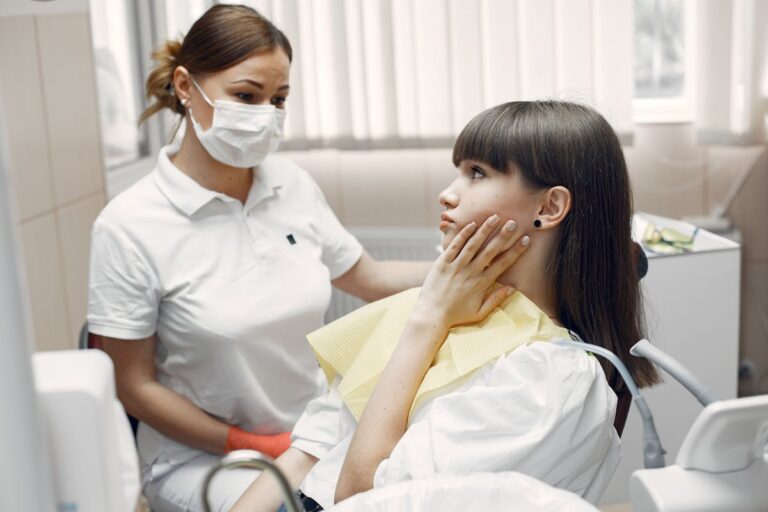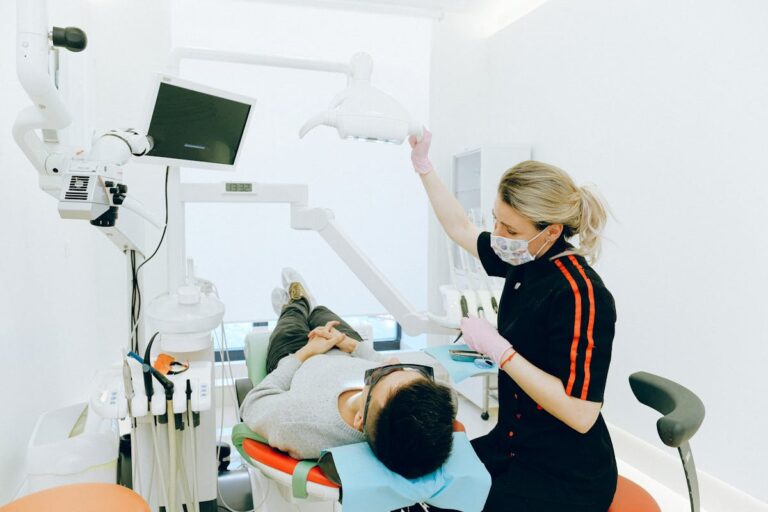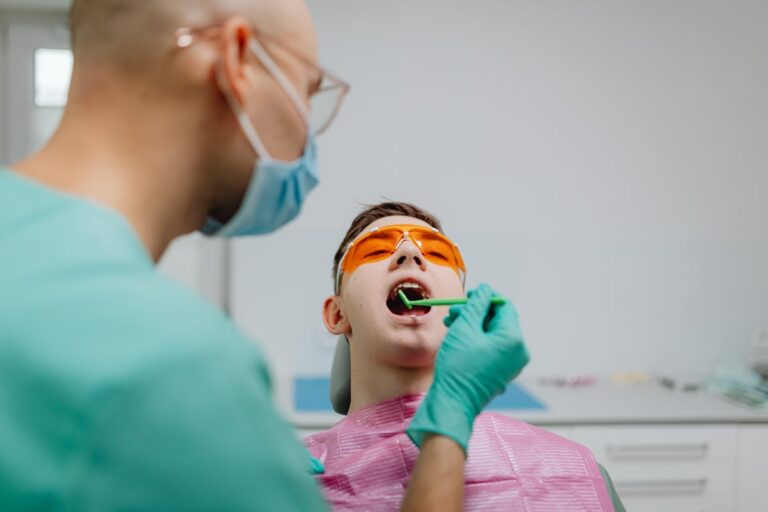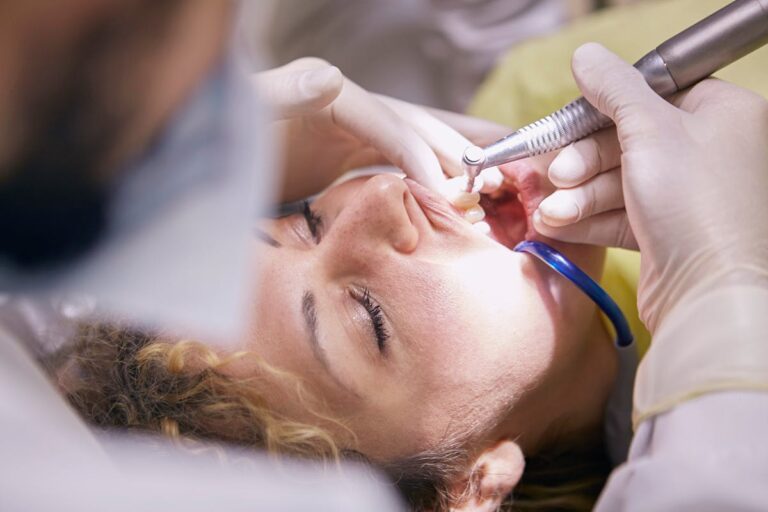Oral cancer, a prevalent health concern, has seen increasing rates in recent years. Early detection is essential in combating this disease and enhancing survival rates. In Minnesota, a variety of services, including those offered by renowned institutions such as the University of Minnesota’s School of Dentistry and Mayo Clinic, provide thorough oral cancer screenings. These screenings, paired with educational initiatives, play a vital role in the early detection and treatment of oral cancer. The subsequent discussion seeks to explore the intricacies of these services, their procedures, and how they contribute to Minnesota’s proactive stance against oral cancer.
Understanding Oral Cancer
While oral cancer may not be as widely talked about as other forms of cancer, it is a serious disease that can have severe consequences if not detected early. Essential to mitigating these consequences is understanding the risk factors and raising symptoms awareness. Risk factors include tobacco and alcohol use, exposure to the human papillomavirus (HPV), and a diet low in fruits and vegetables. The symptoms of oral cancer can range from a persistent oral sore, difficulty in chewing or swallowing, to a change in the voice. Being aware of these symptoms and risk factors is a fundamental step in the early identification of the disease, which can greatly improve the prognosis and treatment options.
Importance of Early Detection
Given the potentially severe consequences of oral cancer, early detection is of utmost importance. Identifying cancerous changes at an initial stage can greatly improve treatment outcomes, reducing mortality rates. Risk factors such as tobacco and alcohol use, age, and HPV infection increase the probability of developing oral cancer. Yet, these factors alone may not cause the disease, making regular screening essential for everyone. The screening benefits are manifold. They include timely detection of pre-cancerous lesions, enabling intervention before the disease progresses. Additionally, early-stage oral cancer treatment is often less invasive and more effective, enhancing patients’ quality of life. Therefore, understanding the importance of early detection through regular screenings is critical in the fight against oral cancer.
Oral Cancer Screening Process
With the importance of early detection in mind, it is necessary to understand the process of oral cancer screening. This medical procedure involves a thorough evaluation of the oral cavity to detect cancerous or precancerous conditions. Various screening techniques are utilized, such as visual inspection, palpation, and the use of special lights or dyes to highlight abnormal tissues. The patient experiences a non-invasive, painless procedure, often performed during routine dental check-ups. Healthcare professionals carefully examine the lips, tongue, gums, and inner cheeks for unusual changes like sores, discoloration, or lumps. If suspicious areas are identified, further diagnostic tests are conducted. Consequently, the oral cancer screening process serves as a critical tool in early diagnosis and successful treatment.
Top MN Screening Providers
Several top-rated providers in Minnesota are renowned for their exemplary oral cancer screening services. These institutions employ advanced screening techniques and highly qualified providers, ensuring accurate and efficient detection of oral cancer. The University of Minnesota’s School of Dentistry, Mayo Clinic, and Park Dental are among the leading providers. They maintain a rigorous standard of service, employing only providers with extensive qualifications in oral pathology. Each provider utilizes innovative technologies and proven methodologies, offering patients the highest level of care. Their screening techniques include visual examinations, palpation of the oral cavity, and usage of specialized tools like VELscope. Through their commitment to quality and precision, these Minnesota providers set the benchmark for oral cancer screenings.
Preparing for Your Screening
To adequately prepare for your oral cancer screening, a few specific steps are recommended. Your personal preparation should include refraining from eating, drinking, or smoking for at least two hours before the procedure. This guarantees the mouth is clean and free of any substances that could interfere with the examination. It’s equally important to abstain from any oral hygiene procedures such as brushing or flossing immediately before the screening, as these could cause minor bleeding or inflammation that may obscure the results. Gathering your medical history and bringing it to the appointment will help the clinician understand your individual risk factors. Finally, make sure to review the screening checklist provided by your healthcare provider, so you fully understand what the procedure entails.

Post-Screening Follow-Up
Upon completion of an oral cancer screening, the post-screening follow-up constitutes a vital phase, encompassing the interpretation of results, exploration of potential treatment avenues, and the provision of emotional support resources. This stage entails a thorough understanding of the screening outcomes and the subsequent medical options that are tailored to the patient’s individual circumstances. Furthermore, considering the emotional toll that a cancer diagnosis can impose, identifying appropriate support resources remains an integral part of the post-screening process.
Understanding Post-Screening Results
After an oral cancer screening, understanding the results is essential for determining the next steps in your healthcare journey. Result interpretation is a vital part of this process. If the screening indicates abnormalities, it doesn’t necessarily mean cancer is present. It could suggest precancerous lesions, or other oral conditions. Therefore, a detailed analysis by a specialist is required to confirm the diagnosis. This is where follow-up questions become important. It’s important to ask your healthcare provider about what the results mean for your health outlook. Inquire about the implications of the findings, the possibility of a false positive, and the necessity for further tests. This will facilitate an informed dialogue for your post-screening follow-up.
Navigating Treatment Options
Should your oral cancer screening results indicate potential abnormalities, a plethora of treatment options may be available, depending largely on the type and stage of detected abnormality. These treatment modalities may include surgery, radiation therapy, chemotherapy, targeted therapy, or a combination of these. In some cases, a less invasive approach may be sufficient, while others may necessitate more aggressive treatments. Patient advocacy plays a critical role in choosing the appropriate treatment plan. It involves understanding your diagnosis, being aware of your treatment options, and actively participating in decisions about your care. Remember, early detection via regular screenings increases the chances of successful treatment and better prognosis, underscoring the importance of regular check-ups.
Emotional Support Resources
What resources are available for emotional support following an oral cancer screening, particularly when the results indicate potential abnormalities? In Minnesota, there are numerous resources offering emotional assistance to individuals traversing this challenging period. Support groups form a critical component of this network, providing a platform for sharing experiences and coping strategies among peers facing similar circumstances. These groups often meet regularly, fostering a sense of community and mutual support. Counseling services, another integral resource, offer professional psychological support. Trained counselors provide strategies to manage stress, anxiety, and other emotional reactions that may arise post-screening. Through these resources, individuals can access the emotional backing they need, promoting mental well-being during their oral cancer journey.
Insurance and Screening Costs
Despite common misconceptions, the cost of oral cancer screenings can vary widely depending on several factors. These factors include the specific type of screening test, the medical facility’s pricing structure, and the patient’s geographical location. Importantly, insurance coverage plays a significant role in determining the out-of-pocket cost for patients. Extensive insurance plans may cover a portion or even the full cost of screenings, thus improving screening affordability. However, patients with limited or no insurance coverage may face higher costs. Consequently, it’s essential for patients to understand their insurance benefits and to seek out affordable screening services. Ultimately, early detection through regular screenings can lead to lower long-term health costs, underscoring the importance of affordable access to these critical services.
Frequently Asked Questions
What Are the Risk Factors for Developing Oral Cancer?
Risk factors for oral cancer include genetic predisposition, which can greatly enhance susceptibility, and tobacco use, a primary contributor. Other factors are excessive alcohol consumption, poor oral hygiene, and human papillomavirus (HPV) infection.
Can Oral Cancer Be Prevented and How?
Oral cancer prevention is achievable through maintaining good oral hygiene, making healthy dietary choices, and avoiding risk factors such as tobacco and excessive alcohol use. Regular dental checkups can also aid in early detection.
What Lifestyle Changes Can Reduce the Risk of Oral Cancer?
Reducing the risk of oral cancer involves key lifestyle modifications, including adopting healthier dietary habits, such as increased fruit and vegetable intake, and tobacco cessation, which includes quitting cigarettes and smokeless tobacco products.
Is Oral Cancer Screening Painful or Uncomfortable?
The oral cancer screening process is generally not painful or uncomfortable. Any discomfort experienced varies among patients but is usually minimal, as the examination primarily involves visual inspection and palpation of oral and surrounding tissues.
Are There Any Side Effects or Risks Associated With Oral Cancer Screenings?
Oral cancer screenings are generally safe with minimal risks. However, concerns include potential for false positives/negatives affecting screening accuracy and the psychological impact, such as patient anxiety, due to fear of a potential cancer diagnosis.






